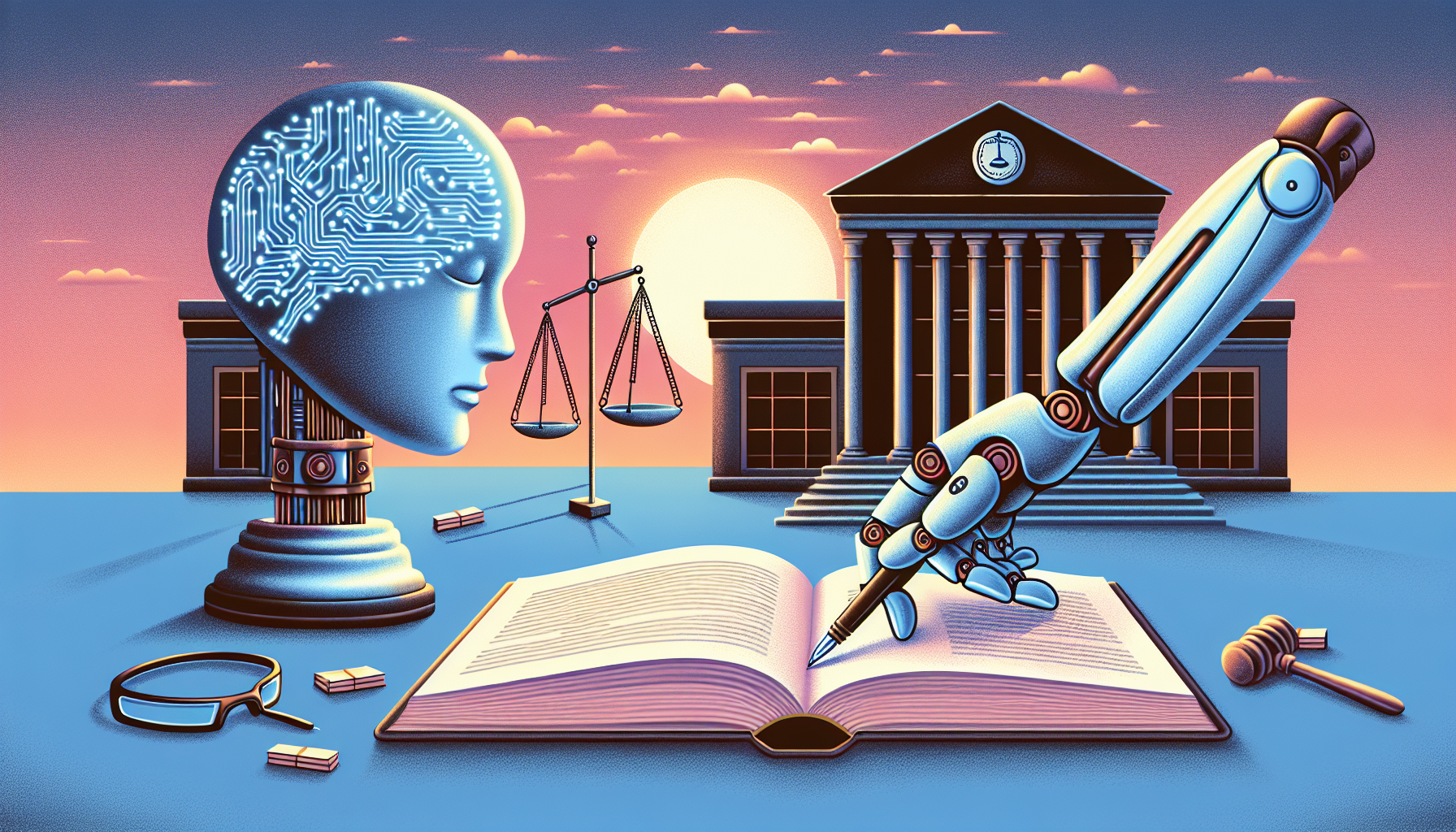Automating Meeting Notes in OneNote Using AI: Practical Workflows for Law Firms
Client calls, deposition prep, internal standups—your calendar is packed. Yet the fastest way to lose value from a meeting is to let notes languish in email or paper pads. This guide shows attorneys and legal operations leaders how to automate meeting notes in Microsoft OneNote using AI and Microsoft 365 tools, so summaries, decisions, action items, and privilege flags are captured consistently—without adding administrative overhead.
Why Automate OneNote Meeting Notes in Legal Work
Automation turns meeting content into searchable institutional knowledge. For legal teams, the benefits are concrete:
- Consistency: Standard fields (attendees, privilege, facts, decisions, tasks) in every note support quality and knowledge reuse.
- Speed: AI-assisted summaries and task extraction accelerates follow-up while details are fresh.
- Compliance: Centralized storage in OneNote (backed by SharePoint/OneDrive) supports retention, legal holds, and eDiscovery.
- Accountability: Automatic Planner/To Do tasks improve execution and visibility.
Best practice: Treat meeting notes as records. Apply sensitivity labels, retention policies, and a uniform OneNote structure per matter so every attorney finds what they need in seconds.
Design a Structured OneNote Template for Matters
Start by designing where and how notes will live. A simple, scalable model:
- A central OneNote “Matters” notebook shared with the practice group or case team.
- Section Groups per matter (e.g., “2024-0156 Acme v. State”).
- Within each Section Group, a “Meetings” section for all meeting notes.
Each meeting note should follow a consistent template.
| Field | Purpose | Example |
|---|---|---|
| Title | Searchable context in OneNote and Outlook | [MatterID] Strategy Call – 2025-03-12 |
| Attendees | Conflict checks, billing references | J. Rivera (Partner), A. Li (Assoc.), Client: D. Nguyen |
| Privilege/Confidentiality | Flag protected communications | Attorney–Client Privileged; Attorney Work Product |
| Agenda & Issues | Keep discussion focused | Discovery strategy; settlement posture |
| Facts & Notes | Substance of discussion | Client discovered new emails relevant to RFP 12 |
| Decisions | What’s agreed, by whom | Proceed with targeted subpoenas to three vendors |
| Action Items | Assign ownership and deadlines | Create draft subpoena list (Owner: A. Li, Due: 03/15) |
| Risks/Follow-up | Capture issues and next steps | Potential privilege waiver; evaluate clawback agreement |
Implementation tip: Pre-create Section Groups for active matters and a “Meetings” section within each. This allows flows to target a known destination for new pages.
Workflow Overview: From Teams to OneNote
Teams meeting (with transcription)
|
v
Transcript file (.docx or .vtt) saved to SharePoint "Transcripts" library
|
v
Power Automate triggers on file creation
|
v
AI summarizes & normalizes into a legal notes schema (JSON)
|
v
Flow creates a OneNote page in the matter’s “Meetings” section
|
v
Planner/To Do tasks created and linked back to the OneNote page
|
v
Email/Teams message notifies attendees with summary + links
Hands-On Tutorial: Power Automate Flow to Create AI-Structured Meeting Notes
This step-by-step guide builds a production-ready flow that takes a meeting transcript or raw notes file, uses AI to structure it, and posts formatted content to OneNote with optional task creation and notifications.
Prerequisites
- Microsoft 365 with OneNote for Business, SharePoint, Outlook, and Teams.
- Power Automate (cloud) with access to the OneNote for Business and SharePoint connectors.
- Optional: AI Builder credits or license to use “Create text with GPT” (or equivalent generative AI action) for summarization.
- A OneNote “Matters” notebook with Section Groups per matter and a “Meetings” section in each group.
Part 1: Prepare the SharePoint Drop Zone
- Create (or choose) a SharePoint site for your practice or matter workspace.
- Add a document library named “Transcripts.”
- Inside “Transcripts,” create folders that mirror your matter IDs (e.g., “2024-0156”).
- Establish a file naming convention: MatterID_YYYYMMDD_Topic.ext (e.g., 20240156_20250312_Strategy.docx).
- In Teams meetings, enable live transcription. After the meeting, download the transcript (.docx is easiest) and save it to the correct folder. You can also upload typed notes if no transcript exists.
Part 2: Build the Flow
- In Power Automate, create a new “Automated cloud flow.”
- Trigger: SharePoint – “When a file is created in a folder.” Select the “Transcripts” library and the root or a specific MatterID folder.
- Action: SharePoint – “Get file metadata.” Input the trigger’s file identifier.
- Action: SharePoint – “Get file content.” Use the same file identifier.
- Action: Initialize variables to capture metadata:
- MatterID (string)
- MeetingDate (string)
- Topic (string)
Use expressions (split by underscore) from the file name to populate these.
- Action: AI step for normalization and summarization.
- Use AI Builder – “Create text with GPT” (or your organization’s generative AI action).
- Prompt template (paste into the AI action’s prompt box):
You are assisting a law firm to produce structured, privileged meeting notes.
Input: raw meeting transcript or notes.
Output: valid JSON with keys exactly: Title, Attendees, Privilege, Agenda, Facts, Decisions, ActionItems, Risks.
– Title must be: “[{MatterID}] {Topic} – {MeetingDate ISO}”.
– ActionItems must be an array of items with: Title, Owner, DueDate (YYYY-MM-DD), and OptionalNotes.
– Include only content implied by the transcript; do not invent facts.
– Use neutral, professional tone and avoid client-sensitive names unless in the transcript.
Transcript:
{{FileContent}}Replace {{FileContent}} with the file content dynamic token, and include MatterID/Topic/MeetingDate variables in the prompt as needed.
- Action: “Parse JSON.” Use the AI output as content and provide a schema with the fields Title, Attendees, Privilege, Agenda, Facts, Decisions, ActionItems (array), Risks. If AI output may vary, consider a try/catch pattern:
- Scope: Try – Parse JSON
- Scope: Catch – If parsing fails, send the full AI output to OneNote as “Unstructured” and alert the owner.
- Action: OneNote for Business – “Get notebooks.” Filter to your “Matters” notebook.
- Action: OneNote for Business – “Get sections.” Find the section named “Meetings” within the Section Group matching MatterID.
- If you cannot programmatically resolve the Section Group, keep a lookup list in SharePoint that maps MatterID to a Section ID and use “Get item” to fetch the right section.
- Action: OneNote for Business – “Create page in a section.” Title = JSON.Title. For the page content, supply HTML that formats the sections clearly, for example:
- H1: Title
- H2: Attendees
- H2: Privilege
- H2: Agenda & Issues
- H2: Facts & Notes
- H2: Decisions
- H2: Action Items (as a bullet list)
- H2: Risks/Follow-up
Most OneNote Create Page actions accept a simple HTML body; verify rendering in a test matter before going live.
- Optional: Create tasks from ActionItems.
- Planner – “Create a task” (plan = your matter plan). Title from ActionItems.Title; Due date from ActionItems.DueDate. In the notes, paste a link to the OneNote page and the ActionItems.OptionalNotes.
- To Do – “Create a to-do” for personal tasks when Owner matches a specific attorney.
- Action: Notify stakeholders.
- Outlook – “Send an email (V2)” to attendees. Include the OneNote page link, a short summary (Decisions), and ActionItems list.
- Or, post a message in the Teams channel associated with the matter using “Post a message (V3).”
- Save, test with a sample transcript, and adjust your prompt to improve consistency.
Part 3: Operationalizing the Process
- Communication: Train attorneys and paralegals to save transcripts/notes into the correct SharePoint folder immediately after meetings.
- Backup path: If a transcript isn’t available, upload raw typed notes—the AI step will still structure them.
- Quality control: Assign a weekly reviewer to spot-check notes for accuracy and privilege markings.
What If You Want Full Hands-Off Capture?
You can push further by using Graph API via an HTTP action in Power Automate to locate and retrieve Teams transcript files automatically from the associated OneDrive/SharePoint location when transcription is enabled. This requires additional configuration and appropriate permissions, but it removes the manual upload step. Many firms start with the “Drop Zone” approach above and later graduate to Graph-based retrieval once governance and naming are standardized.
Using Copilot in OneNote and Teams for Ad-hoc Summaries
Beyond automation, Copilot can accelerate on-the-fly note capture and drafting:
- In OneNote: Use Copilot to summarize long notes into bullet points; ask it to “Highlight decisions and deadlines” or “Convert these bullets into a litigation task list.” Review the output for accuracy and privilege before saving.
- In Teams: After a recorded call with transcription, use Copilot or Teams meeting recap to surface key points, then paste those directly into your OneNote meeting page.
- Consistency: Keep the same headings and language used in your OneNote template so AI-generated content remains standardized across matters.
Example OneNote Copilot prompts:
– “Summarize the key decisions from this meeting and list action items with owners.”
– “Rewrite the notes under ‘Facts’ in neutral legal prose suitable for discovery planning.”
– “Flag any confidentiality or privilege concerns in a separate ‘Risks’ section.”
Governance, Privilege, and Security Controls
Automating does not mean relaxing controls. Integrate governance into the workflow:
- Sensitivity labels: Apply Confidential or Attorney–Client Privileged labels to your “Matters” OneNote and the “Transcripts” library. Use label policies to enforce encryption and external sharing restrictions.
- Retention: Use Microsoft Purview retention labels to ensure meeting notes are preserved (or defensibly disposed) per your firm’s policy and obligations.
- DLP: Configure Data Loss Prevention rules to block copying privileged notes to unmanaged locations.
- Permissions: Use SharePoint groups mapped to matter teams. Restrict the “Transcripts” library and OneNote sections to need-to-know users.
- eDiscovery: With notes stored in OneNote/SharePoint, they’re discoverable via eDiscovery (Standard/Premium). Ensure the flow’s output preserves authorship and timestamps.
- Audit trail: Add a Power Automate log list that records who uploaded, when summarized, and where notes were stored. Include the AI prompt version to support reproducibility.
Optimization, Troubleshooting, and Maintenance
Prompt Engineering for Legal Accuracy
- Use constrained JSON schemas and instruct the model not to invent facts.
- Provide examples within the prompt for Decisions and ActionItems so formatting is predictable.
- Include a reminder to preserve dates, names, and defined terms exactly as written.
Flow Reliability Tips
- File formats: Prefer .docx transcripts for clean text extraction. If you receive .vtt, strip timestamps using a Compose step or a simple replace expression.
- Section resolution: Maintain a SharePoint list mapping MatterID to OneNote Section ID to avoid lookup faults when matters are renamed.
- Error handling: Use Try/Catch scopes. On failure, send the unstructured content to a “Needs Review” section and alert the matter lead.
- Task duplication: De-duplicate action items by hashing Title + Owner + DueDate before creating Planner tasks.
Performance and Cost
- Batching: If you expect many uploads, limit flow concurrency to avoid AI throttling.
- Licensing: Generative AI actions in Power Automate may require AI Builder credits or specific licenses. Monitor usage and set budget alerts.
- Storage: Large transcripts can inflate OneNote page sizes. Summarize aggressively and link to the original transcript in SharePoint instead of embedding full text.
User Adoption Checklist
- Document the naming convention and where to save transcripts.
- Provide a “Run Manually” version of the flow (Instant flow) as a fallback.
- Train on Copilot prompts for OneNote and on reviewing AI output for privilege and accuracy.
- Publish a 1-page SOP with screenshots inside your practice team’s SharePoint site.
Conclusion and Next Steps
Automating meeting notes in OneNote lets legal teams capture value from every conversation—accurately, consistently, and with minimal effort. By pairing SharePoint, Power Automate, and AI, you standardize summaries, decisions, and tasks while maintaining governance across matters. Start with the “Drop Zone” flow, refine your prompts, and expand into deeper integrations as your team adopts the process.
Want expert guidance on bringing Microsoft 365 automation into your firm’s legal workflows? Reach out to A.I. Solutions today for tailored support and training.





